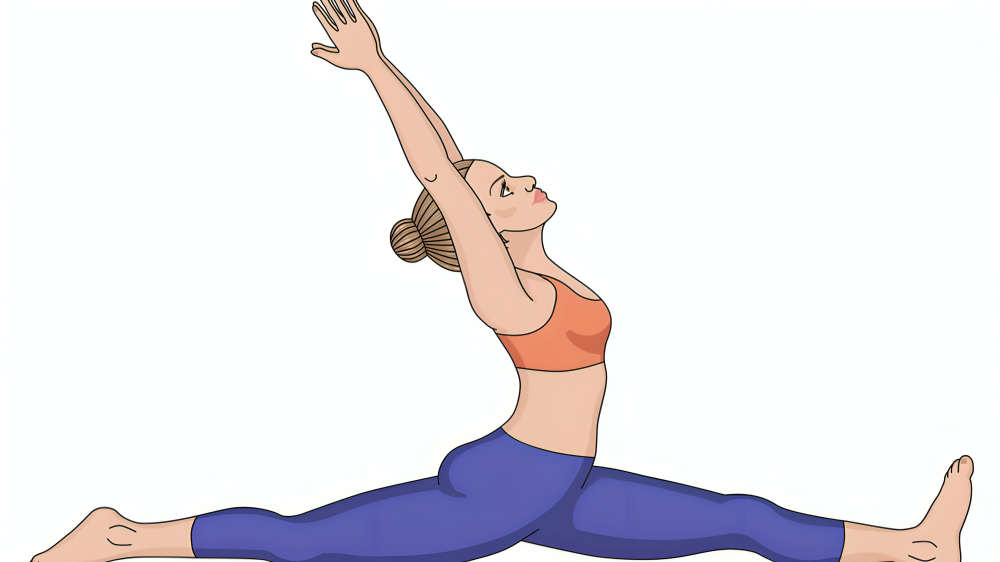
What Is Hanumanasana?
Hanumanasana, commonly called the “Monkey Pose,” is a seated forward split imitation of the legendary leap of the Hindu deity of great devotion and physical strength, Hanuman. This posture requires suppleness of the hips, hamstrings, and groin combined with great inner strength, originating from the mental rather than the physical center.
How to Practice Hanumanasana
Start in Low Lunge (Anjaneyasana)
Step one foot forward and the other back into a deep low lunge. Front knee bends to 90 degrees, and your back leg stretches straight behind you. Make sure to square hips toward the front of your mat for an even alignment.
Lower the Hips Down .
Slide your front foot forward and your back foot back.
As your hips start lowering to the floor, keep the legs active, too. Do not rush through the movement-use blocks under your hands if you need to.
Align Yourself
Keep your hips square. You may need to contort ever so slightly just to not twist or overstretch. “
Your front toes point upwards, while your other leg is straight back directly behind you.
Reach for Full Expression
Only when you feel centered can you put your hands on your heart or stretch your arms up freely, and thus fully express the posture. – Hold the posture for 5-10 breaths or for as long as feels comfortable.
Slowly press your palms into the ground or blocks to lift your hips up.
Slowly slide your feet back to meet each other in a seated or kneeling pose.
Benefits of Hanumanasana
Flexibility Increase
Perhaps the most visible flexibility that arises from practicing Hanumanasana is the improvement in the range of movement in the hips, hamstrings, and groin. Given consistent practice, you’ll notice an extension in your range of motion.
Strength Gained
It’s not just flexibility: the mere act of holding this pose engages your hip flexors, quads, and core, making your lower body strong. That strength can help you out in other dynamic movements like walking, running, or dancing.
Makes one Balance and Align
Since precise alignment of the pelvis, hips, and legs is demanded in Hanumanasana, it enhances body awareness. This improves your general posture and balance.
Increases Mental Concentration and Patience
As with many yoga postures, Hanumanasana teaches patience and perseverance. It is often a pose you might not feel that you have “achieved” instantly, but through mindful practice, you learn to remain grounded and centered even when things are not going so well.
Releases Emotional Tension
The hips hold emotional tension. Deep stretches, such as Hanumanasana, can transfer the tension into physical stress that is resolved, allowing for emotional catharsis and relaxation.
It’s Here Anjaneyasana How to Do it and what are the Benefits
FAQs
Q1: How will I know how often to practice Hanumanasana?
Try 2–3 times a week with frequency and ease. Consistency must be maintained; however, overstretching should not be done.
Q2: Is Hanumanasana alright for beginners?
Absolutely, with modifications and cautious practice. Beginners must proceed slowly with the use of props with emphasis on correct alignment.
Q3: Even though I have tight hamstrings, can I do Hanumanasana?
Absolutely. But you can even use it to gradually come out of the tight hamstrings, though you will have to be rather careful and ought to have these props by your side.

